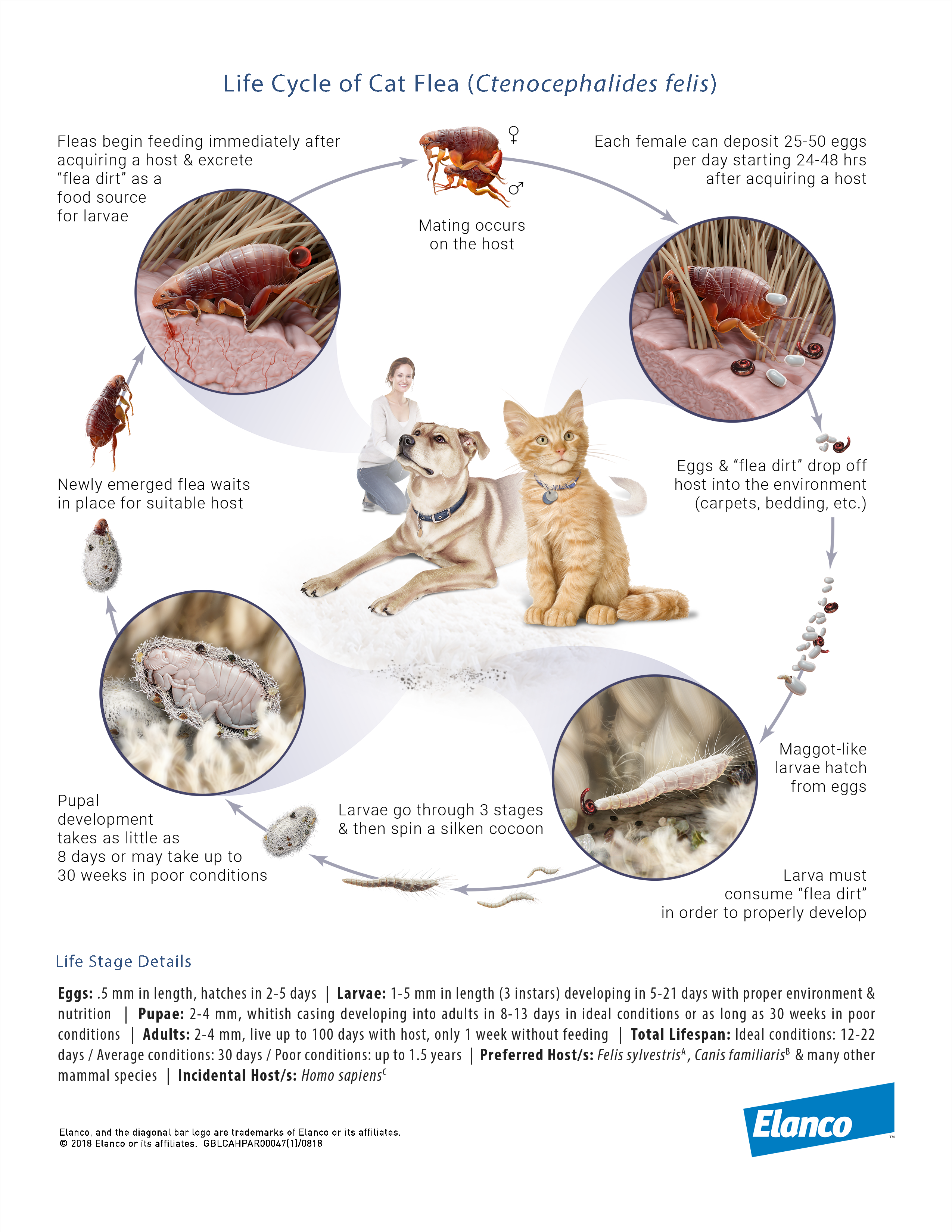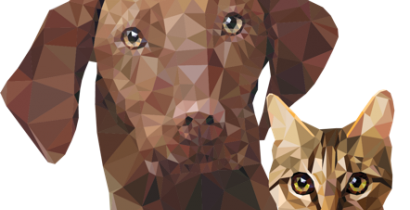Home -> Vectors -> Fleas -> Life Cycle
LIFE CYCLE
Fleas develop via a number of stages, beginning with the egg, followed by a larva, pupa and finally adult stage. The life cycle of the flea is one of complete metamorphosis. It can be completed in as little as 14 days or be prolonged up to 140 days, depending mainly on temperature and humidity (Silverman et al., 1981). The life cycle of most flea species is characterised by three events: the hatching of the egg, the period from first instar to pupa, and the period from pupa to adult (Linardi et al., 1997).

Cat flea life cycle stages

Egg
Larva
Pupa
Preemerged Adult
Adult
References
EGG
Egg morphology
The cat flea eggs possess a widely oval form, rounded at both ends, in the beginning a slightly transparent and later pearly white colour, 0.5 x 0.3 mm size, and a smooth surface which can slightly darken later on (Karandikar and Munshi, 1950). With a size of 0.5x 0.3 mm, they are well visible to the naked eye.
Cat flea eggs are laid nearly exclusively on the host by mature females. They do not immediately fall from the animal (Rust and Dryden, 1997), as initially the chorion of the egg is wet, but once the outer egg surface dries, 60% of the eggs drop off within two hours of deposition (Rust, 1992). This drop off is influenced by grooming, hair coat length, and host activity (Rust and Dryden, 1997). Within eight hours, about 70% of them are dislodged from the host (Rust, 1992). Dropping off the host, flea eggs accumulate in areas where pets sleep and rest (Byron, 1987).
Egg deposition
Egg deposition by adult cat flea females does not take place during the first 24 hours of blood-feeding and is only less than half of the daily average during the second 24-hour period (Thomas et al., 1996). On cats, fleas reach reproductive maturity within the first week, with a maximum egg output occurring within three to nine days (Williams, 1983; Osbrink and Rust, 1984; Dryden, 1989).
It is suggested that fleas do not mate before blood-feeding or if they do, the mating is unsuccessful. In the cat flea, blood-feeding is apparently necessary for both oviposition and successful mating. Mating however is not necessary for oviposition (Zakson-Aiken et al., 1996).
Fleas are highly reproductive and work with a calculated loss, as several other parasites also do (Strenger, 1973), however, the number of eggs collected in different studies to gain an impression of daily production and total egg count varies greatly between hosts.
Adult female cat fleas may produce from 11 to 46 eggs per day (Osbrink and Rust, 1984; Dryden, 1988, 1989; Hink et al., 1991). Numbers reported for total egg numbers per female flea in its lifetime vary substantially, ranging between 300 to 500 (Osbrink and Rust, 1984), 800 to 1000 (Patton, 1931; Smit, 1973) and up to 1,745 eggs during a 50 day period, respectively well over 2,000 eggs over 113 days in unconfined fleas and cats restricted from grooming (Dryden, 1989). Within 24 hours, about 1.05-times the body weight is produced in form of eggs (Dryden and Gaafar, 1991).
Egg hatching
As for all its life stages, the hatching of the cat flea egg is strongly influenced by environmental conditions, especially temperature and relative humidity (RH). At 16°C, the number of flea eggs hatching increased with rising RH from about 70% hatching at 33% RH up to 100% hatching at 92% RH. At 27°C, nearly all eggs hatched when there was 50% RH or more. However, at 35°C hatching only took place in moist air (75-92% RH) and moisture conditions below 75% RH caused desiccation. Olsen (1985) found about 70% hatch, when eggs were held at 24+/-1°C and 65+/-5% RH. Temperature has a dominant effect on the time required for hatching, which increases from 1.5 to 6.0 days as temperature decreases from 32 to 13°C (Silverman et al., 1981). An exposure to 3°C for one day kills 65% of the eggs. Longer exposures provide complete kill (Silverman and Rust, 1983).
Infobox: Cat flea eggs |
|
|
|
|
|
EXPLORE OUR CONTENT
 CVBD MapsThe CVBD Occurence World Map presents country-specific situations based on current scientific knowledge and feed-back from experts around the world in an easy-to-grasped way. |
| Read more-> |
 ResourcesElanco Animal Health supports education in parasitology and especially in the field of vector-borne diseases. Access image collections, discover the World Forum calendar, interesting links and our glossary. |
| Read more-> |
 CVBD World ForumThe CVBD World Forum is a working group of leading international experts with the mission to enhance knowledge and communication on companion animal vector-borne diseases for the improvement of animal, human, and environmental health. |
| Read more-> |
